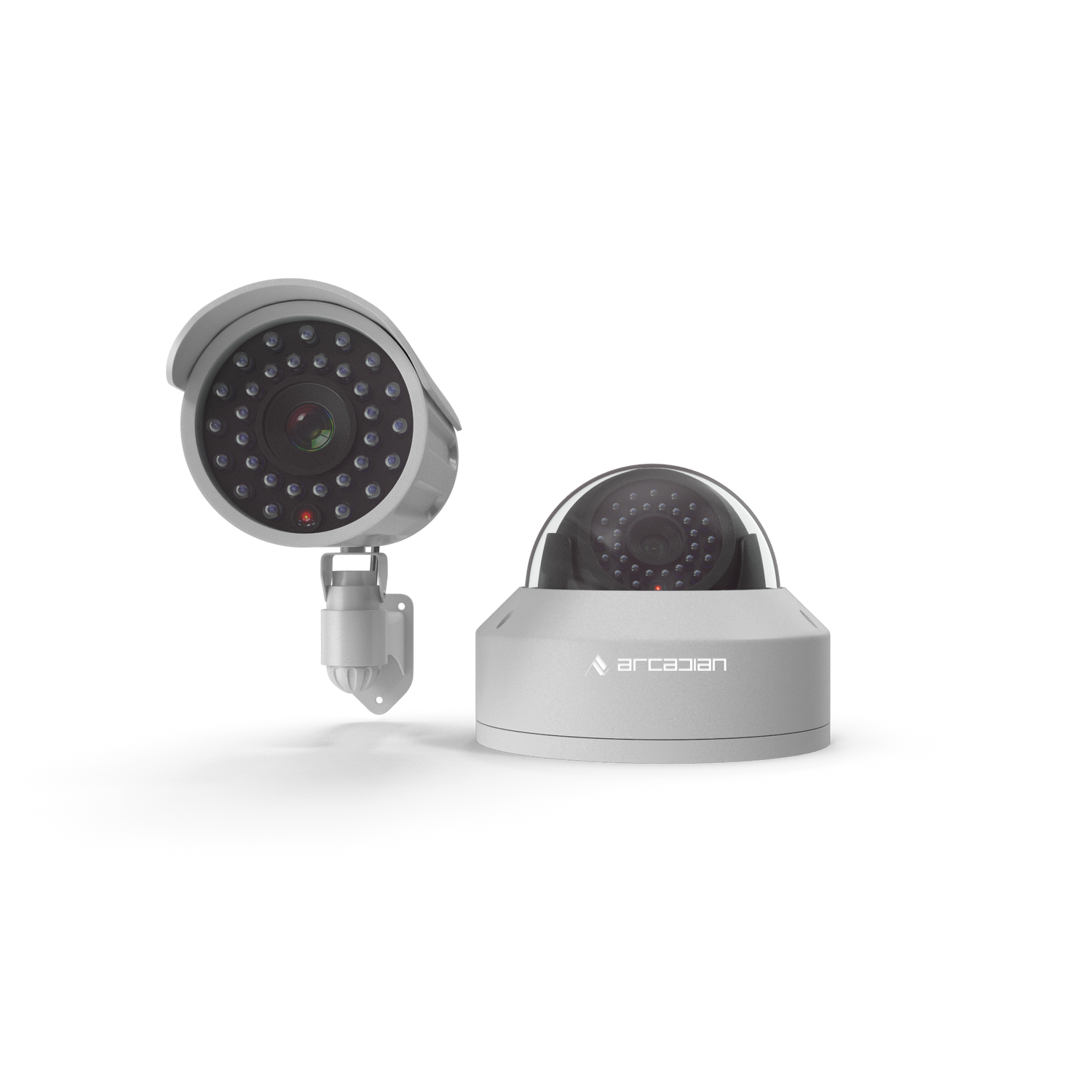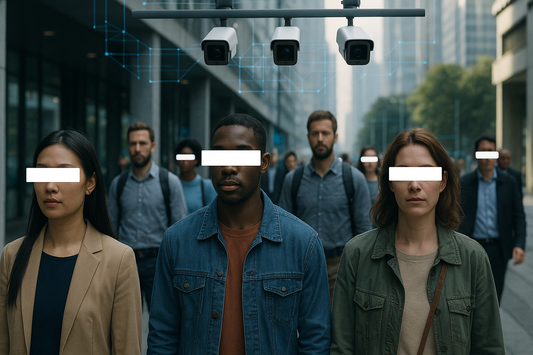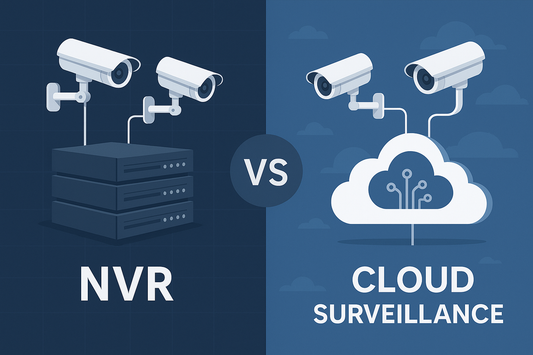Cloud-Based Surveillance vs. Traditional CCTV: Which Is Better?
In a world where every second counts, choosing the right surveillance system can make or break your security strategy. The old-school CCTV model has been around for decades, guarding businesses and homes with analog charm. But now, cloud-based surveillance systems are rewriting the rules—offering real-time access, AI-driven analytics, and scalability...

- Introduction: The Battle Between Old and New
- What Is Traditional CCTV?
- What Is Cloud-Based Surveillance?
- Head-to-Head Comparison Table
- Why Cloud-Based Systems Are Gaining Ground
- Real-Life Scenario: When Seconds Matter
- What About Privacy and Compliance?
- What’s the Cost Difference?
- So, Which One Is Better?
- Final Verdict: Choose the Future, Not the Past
- Want to Try It for Free?
In a world where every second counts, choosing the right surveillance system can make or break your security strategy. The old-school CCTV model has been around for decades, guarding businesses and homes with analog charm. But now, cloud-based surveillance systems are rewriting the rules—offering real-time access, AI-driven analytics, and scalability at your fingertips.
So which is better? Let’s break it down.
Introduction: The Battle Between Old and New
Whether you're a retail store owner, cannabis dispensary operator, warehouse manager, or a multi-location franchise, the question isn’t if you need surveillance—but which kind. Traditional CCTV systems have long been the default, but cloud-based surveillance is quickly emerging as the smarter, more adaptable alternative.
In this post, we’ll compare cloud-based surveillance vs. traditional CCTV across performance, cost, maintenance, features, scalability, and long-term value—so you can decide what’s best for your business.
What Is Traditional CCTV?
Traditional Closed-Circuit Television (CCTV) refers to analog systems where footage is recorded locally on DVRs or NVRs (Digital/Network Video Recorders). These systems rely on coaxial or Ethernet cables and are often tied to on-site monitors or local servers.
Pros of Traditional CCTV:
-
One-time installation cost (hardware only)
-
Works without internet
-
Familiar to most installers and users
Cons of Traditional CCTV:
-
Remote access is limited or clunky
-
High maintenance (hardware failure, manual storage upgrades)
-
Vulnerable to theft or damage of NVR/DVR
-
No AI-powered features without add-ons
-
Footage is often lost when systems crash or hard drives fill up

What Is Cloud-Based Surveillance?
Cloud-based surveillance systems store and manage video footage on secure cloud servers. They typically use IP cameras and stream footage over the internet. Access, monitoring, and AI-powered insights are all delivered via web or mobile dashboards.
Pros of Cloud-Based Surveillance:
-
Access footage from anywhere, anytime
-
Zero on-site storage or NVR needed
-
Automatic updates, upgrades, and backups
-
Seamless AI features (motion detection, behavior analysis, license plate recognition, and more)
-
Scalable across multiple locations
-
Proactive threat detection instead of passive recording
Cons of Cloud-Based Surveillance:
-
Requires stable internet connection
-
Subscription-based cost model
-
Some legacy systems may need upgrading
Head-to-Head Comparison Table
|
Feature |
Traditional CCTV |
Cloud-Based Surveillance |
|
Storage |
Local DVR/NVR |
Secure cloud servers |
|
Remote Access |
Limited or complex |
Web & mobile apps |
|
Installation |
Wired, more complex |
Plug-and-play IP cameras |
|
Scalability |
Limited to local infrastructure |
Easily scales to multiple sites |
|
Maintenance |
High (hardware failures, updates) |
Low (auto-updates, no NVR) |
|
AI & Analytics |
Rare, expensive add-ons |
Built-in or bundled |
|
Security Risk |
Prone to theft or tampering |
Encrypted, redundant backups |
|
Cost Model |
One-time hardware |
Subscription-based SaaS |
|
Integration Options |
Limited |
Works with POS, access control, alarms |
|
Alerting & Automation |
Reactive |
Proactive, AI-driven |
Why Cloud-Based Systems Are Gaining Ground
The shift toward cloud-based surveillance isn’t just about storage—it’s about intelligence. Modern businesses don’t just want to record crime; they want to prevent it. That’s where AI-powered systems like Ranger by ArcadianAI come in.
With cloud-based platforms:
-
You get real-time alerts.
-
You can monitor multiple sites from one dashboard.
-
You can search incidents using natural language instead of digging through hours of footage.
-
You reduce the cost and complexity of maintaining outdated hardware.
And most importantly, your security becomes smarter every day.
Real-Life Scenario: When Seconds Matter
Picture this:
A cannabis store in Toronto had ArcadianAI's Ranger installed. One evening, Ranger identified four individuals approaching the store aggressively. Within seconds, it noticed suspicious movement—one of them had a firearm. Ranger immediately triggered a threat protocol, prompting an alert for authorities.
From the moment the group approached to the moment the alert was sent, only 49 seconds passed. No panic. No delay. Just intelligent, fast action.
This level of proactive protection is impossible with a traditional CCTV setup.
What About Privacy and Compliance?
Cloud platforms often come with end-to-end encryption, role-based access, and compliance with regulations like NDAA, GDPR, and HIPAA, making them suitable even for sensitive industries like healthcare, finance, and cannabis.
Plus, if you're worried about data sovereignty or legal access—top cloud vendors offer options to store data within the region, with full audit trails.

What’s the Cost Difference?
Here’s a quick comparison of cost structures:
|
Cost Factor |
Traditional CCTV |
Cloud-Based Surveillance |
|
Upfront Hardware |
High (cameras + NVR) |
Moderate (IP cameras only) |
|
Ongoing Costs |
Low (but high maintenance) |
Monthly subscription per camera |
|
Upgrade Costs |
High |
Included in subscription |
|
Downtime Risk |
Medium to High |
Low, with redundancy |
|
AI Add-Ons |
Expensive |
Often included |
Over 3–5 years, cloud-based systems are usually more cost-effective, especially for businesses that require remote access, scalability, and proactive alerts.
So, Which One Is Better?
If you're still relying on traditional CCTV, you’re essentially watching the past. You only know what happened after the fact—when it’s too late.
With cloud-based surveillance, you’re equipped with:
-
Instant visibility
-
Smart detection
-
Scalable infrastructure
-
AI-powered prevention
In short, it’s not just better—it’s a whole new way to think about security.
Final Verdict: Choose the Future, Not the Past
While traditional CCTV systems might still work for some low-risk, single-location setups, businesses that demand real-time awareness, multi-site management, and intelligent threat prevention should strongly consider going cloud.
At ArcadianAI, we’ve made it simple to transition. Our platform works with 3,000+ camera models and requires no NVRs, just pure cloud power and a guardian AI called Ranger.
Want to Try It for Free?
We’re currently offering free pilot programs for businesses looking to test Ranger and see how it performs in real environments. It’s plug-and-play with your existing cameras.

Security is like insurance—until you need it, you don’t think about it.
But when something goes wrong? Break-ins, theft, liability claims—suddenly, it’s all you think about.
ArcadianAI upgrades your security to the AI era—no new hardware, no sky-high costs, just smart protection that works.
→ Stop security incidents before they happen
→ Cut security costs without cutting corners
→ Run your business without the worry
Because the best security isn’t reactive—it’s proactive.






